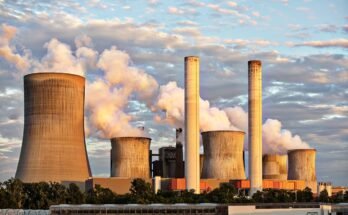The environment encompasses everything around us—the air we breathe, the water we drink, the land we live on, and all the plants, animals, and ecosystems that support life on Earth. It provides essential resources for survival and forms the basis for our daily activities, including agriculture, transportation, and industry. Understanding the environment’s complexities is crucial for preserving its health and sustaining life for future generations. In this article, we will explore the significance of the environment, the challenges it faces, and the potential solutions to address environmental issues.
The Importance of the Environment
- Natural Resources
The environment is home to a wide array of natural resources, such as forests, minerals, fossil fuels, and water. These resources are essential for human survival and economic development. Forests provide oxygen, absorb carbon dioxide, and serve as habitats for wildlife. Water sustains life, enabling the growth of crops and the hydration of people and animals. Minerals and fossil fuels fuel industries and transportation. Without the environment’s resources, human civilization as we know it would not be possible. - Biodiversity
Biodiversity refers to the variety of life on Earth, from microscopic organisms to large mammals and everything in between. It is a critical component of the environment that ensures ecosystems function properly. Biodiversity provides ecosystem services such as pollination, soil fertility, clean water, and disease regulation. It also contributes to human well-being by providing food, medicine, and recreational opportunities. - Climate Regulation
The environment plays a central role in regulating the Earth’s climate. Natural processes, such as the carbon and water cycles, help maintain the balance of temperature and precipitation. Healthy ecosystems like forests and oceans act as carbon sinks, absorbing excess carbon dioxide (CO2) from the atmosphere, which helps mitigate global warming and climate change.
Environmental Challenges
Despite the environment’s critical role in sustaining life, it faces numerous challenges, many of which are caused by human activity. Some of the most pressing environmental issues today include:
- Climate Change
One of the most significant threats to the environment is climate change, driven by the excessive burning of fossil fuels, deforestation, and industrial activities. This results in the release of greenhouse gases (GHGs), such as carbon dioxide, into the atmosphere, which trap heat and cause global temperatures to rise. The consequences of climate change are far-reaching, including rising sea levels, extreme weather events, disruptions to food and water security, and the loss of biodiversity. - Pollution
Pollution, whether it be air, water, or soil contamination, poses a major threat to environmental health. Air pollution from industries, vehicles, and power plants can cause respiratory problems and contribute to global warming. Water pollution, often caused by chemicals, plastics, and sewage, harms aquatic life and threatens the safety of drinking water. Soil pollution, largely due to agricultural chemicals and improper waste disposal, degrades soil quality, affecting crop yields and harming ecosystems. - Deforestation
Deforestation is the large-scale removal of forests, often for agriculture, urbanization, or logging. It leads to the loss of biodiversity, as forests are home to countless species. Additionally, deforestation contributes to climate change because trees absorb carbon dioxide, and their removal releases this CO2 back into the atmosphere. Deforestation also disrupts the water cycle and leads to soil erosion. - Loss of Biodiversity
Human activity, such as habitat destruction, pollution, overfishing, and the introduction of invasive species, has caused a dramatic decline in biodiversity. Many species are facing extinction, and ecosystems are being altered irreversibly. The loss of biodiversity reduces the resilience of ecosystems and limits their ability to provide vital services like clean water, food, and disease regulation.
Solutions to Environmental Issues
Addressing environmental challenges requires a concerted effort from individuals, governments, and organizations worldwide. Some of the most effective solutions include:
- Renewable Energy
Transitioning from fossil fuels to renewable energy sources, such as solar, wind, and hydroelectric power, is crucial to reducing greenhouse gas emissions and combating climate change. Renewable energy is cleaner, sustainable, and more environmentally friendly compared to fossil fuels. Governments and businesses can invest in green technologies, while individuals can adopt energy-saving practices. - Sustainable Agriculture
Sustainable agricultural practices, such as crop rotation, organic farming, and reduced pesticide use, can help preserve soil health, conserve water, and protect biodiversity. Encouraging local food production and reducing food waste are also important steps toward sustainability. Supporting sustainable agriculture benefits not only the environment but also farmers and local communities. - Conservation Efforts
Protecting and restoring ecosystems is vital for preserving biodiversity. Efforts to establish protected areas, such as national parks and wildlife reserves, can help safeguard habitats from destruction. Reforestation and afforestation projects can reverse the damage caused by deforestation, while conservation programs can prevent the extinction of endangered species. - Waste Reduction and Recycling
Reducing waste and promoting recycling are essential for limiting pollution. Individuals and industries can reduce waste by adopting a circular economy model, where products are reused, refurbished, or recycled instead of discarded. Governments can implement policies to reduce plastic use and encourage the recycling of materials like paper, metals, and glass. - Environmental Education and Advocacy
Raising awareness about environmental issues through education and advocacy is key to creating a more sustainable future. Encouraging individuals to reduce their carbon footprints, adopt eco-friendly practices, and advocate for policy changes can drive positive environmental change. Grassroots movements and environmental organizations play a vital role in inspiring action and holding governments and corporations accountable for their impact on the environment.
Conclusion
The environment is the foundation of life on Earth, providing the resources and ecosystems that sustain human and animal life. However, the environment is under increasing pressure due to human activity, from climate change and pollution to deforestation and biodiversity loss. To ensure a healthy and sustainable future, it is essential to take immediate action to address these environmental challenges. Through innovation, conservation, and responsible practices, we can protect and restore the environment, creating a better world for current and future generations.



